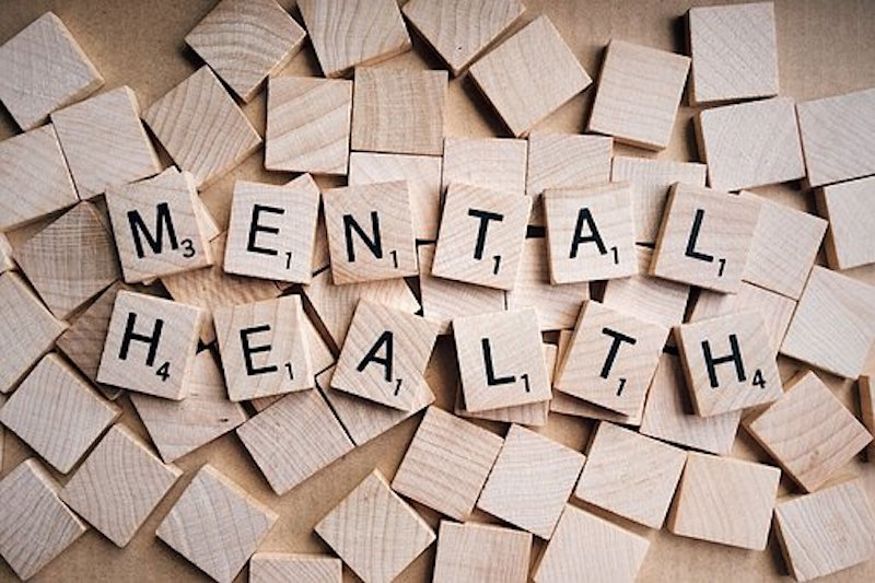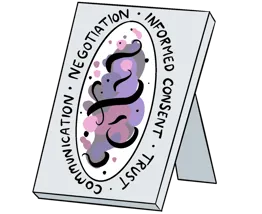Enrol in an online course today for flexible, self-paced learning—no fixed schedule required. Plus, enjoy lifetime access to course materials for convenient revisiting.
Five Reasons Why There’s No Such Thing As ‘Mental Health’

Your body is a chain of dominos, responding to events and experiences. We often call the final few dominos ‘mental health’, but what does that mean?
We are usually referring to an experience that shows up in something we call our mind, but even that can get confused; for example, is feeling anxious the same as being worried? Does an alarming thought, or a miserable one, constitute anxiety or depression? And if I yell at my wife do I have a mental health problem, a personality disorder? Or am I just an ass?
To sort this out, you have to go a few steps back along the chain of dominos. There, you will find that there really isn’t any such thing as mental health. Instead, there are a series of consequences to the way that our complex human organisms respond to threat; and particularly how we have adapted to respond to threat badly.
One: We usually end up dysregulated by the time our childhood is over, if not well before
When a gazelle is chased by a lion, it tends to match its response very nicely to the actual threat from the lion in the here and now. So, if the lion pops up on the horizon, then it will start to get a bit vigilant. If the lion gets too close, it will run. If the lion is right behind it, then it will kick. And if it gets caught it will freeze, almost as if it is feigning death. This all tends to work out as well as possible for the gazelle. Its body is working just right.
We, on the other hand, through a misstep in evolution, appear to be dysregulated in response to threat. This means that we can start running wildly when the lion is still miles away, or collapse in submission when we still have time to get away. We overreact and under-react. We rarely ‘Goldilocks’ react and get it just right.
Two: This changes our biochemistry
Responses to threat are like the brake and accelerator in a high-powered car. If you hit them hard it has a massive effect on the car’s performance. If I’m overreacting all the time, my body (which includes my brain) is flooded with action, which is not what it is designed for. This is wearing. We sometimes call this symptom anxiety. Equally, if I’m under-reacting (usually because I’m exhausted from overreacting) then my body and brain can be dull. We often call that depression.
But these are normal things for our bodies to do; just not in this particular context. We are not ill (like a lung is with cancer or infection); we are doing the right thing at the wrong time.
Three: This changes our thinking
‘Borderlines’ are supposed to be people who overreact to things. Well, if I’m living in my body in the wrong time, then I’m going to react differently to how you expect me to. You can only see my context in the here-and-now. I’m feeling the way-back-when. That will make me think things are going on now which are actually only happening in my body. So, I have to invent an invisible lion. This changes my thinking and my sense of reality.
Four: This changes our relationships
If we can’t see reality accurately, and we can’t respond evenly to what is really there, then we are likely to be overreacting or under-reacting in our relationships. Each of these reaction styles can give rise to different problems, and when you mix them together you get a variety of different relationships, from explosive, to abusive, to dead. It might be tempting to see this as mental or behavioural health, but once again if we follow the dominos, we get back to the threat response and the nervous system: something which is in the body.
Five: This changes our characters and personalities
It sounds exhausting doesn’t it? Well it is, and meanwhile we actually have to try to have friends, manage relationships, hold down jobs, and get by. We are smart, so we figure out how to adapt this broken biology of a dysregulated nervous system to the world we are thrust into. This can lead to adaptations (sometimes we call these attachment styles, or character strategies, or even personality disorders). But fix the body, and people no longer need their adaptations, which tells you where the problem really is.
So, the symptoms of so-called ‘mental health’ conditions are just a few dominos towards the end of a bio-physiological chain. If you want to understand it, and therefore succeed in treating it, you have to go upstream in the body and get curious about the nervous system. Pick up the first few dominos and the last few stand up all by themselves.
If you try to push them up on their own, then you are fighting against the weight of the whole chain. Pharmacology and talk therapy is that fight. You can make it easier for you and your clients by talking a different language!
The Invisible Lion: Flatpack Instructions for Life, by Benjamin Fry, is available in paperback or on your kindle from Amazon.

















